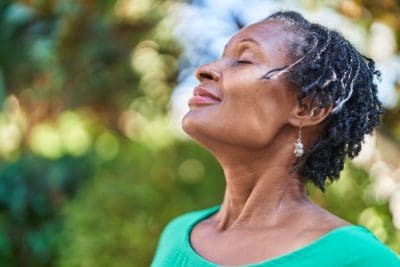In our rapidly evolving world, environmental pollutants pose an increasing threat to respiratory health. These invisible dangers can lead to shortness of breath and chronic obstructive pulmonary disease (COPD), significantly impacting quality of life. Understanding these pollutants is crucial for both prevention and management of respiratory conditions.
Airborne particulate matter: The invisible threat
Particulate matter, especially PM2.5 and PM10, ranks among the most perilous pollutants. These microscopic particles can penetrate deep into the lungs, causing inflammation and reduced lung function.
Urban dwellers face higher risks due to increased exposure from vehicles, industrial activities, and construction sites. For those with pre-existing conditions like asthma or COPD, particulate matter can trigger exacerbations and accelerate health decline.
Symptoms of exposure include chest tightness, persistent coughing, and breathlessness. Long-term effects can be severe, potentially leading to chronic lung diseases including COPD.
Protective measures: Use air purifiers at home and limit outdoor activities on high-pollution days.
Ground-level ozone: A summer hazard
While stratospheric ozone protects Earth from harmful UV rays, ground-level ozone poses significant health risks. Formed when pollutants from vehicles and industrial emissions react with sunlight, this irritant can make breathing difficult even for healthy individuals.
Those with respiratory conditions are particularly vulnerable to ozone’s effects. Exposure can cause shortness of breath, chest pain, and coughing. For COPD patients, it may lead to dangerous exacerbations requiring hospitalization.
Children, the elderly, and immunocompromised individuals face higher risks from ozone exposure.
Protective measures: Limit outdoor activities during peak ozone hours, typically late afternoon on hot, sunny days.
Nitrogen dioxide: The traffic-related danger
Primarily produced by motor vehicles and industrial plants, nitrogen dioxide contributes to the formation of particulate matter and ground-level ozone. It irritates airways, exacerbating shortness of breath and potentially triggering COPD onset in susceptible individuals.
For those already diagnosed with COPD, high nitrogen dioxide levels can cause severe respiratory distress. This pollutant is particularly harmful in areas with heavy traffic.
Long-term exposure can lead to irreversible lung damage, contributing to the progression of chronic respiratory diseases.
Protective measures: Reduce vehicle use and support cleaner transportation initiatives.
Tobacco smoke: A pervasive threat
While often considered a personal choice, tobacco smoke acts as an environmental pollutant affecting air quality for non-smokers. Exposure to secondhand smoke can have devastating effects on respiratory health, causing shortness of breath and increasing COPD risk.
Secondhand smoke contains over 7,000 chemicals, many toxic to the lungs. Even brief exposure can irritate airways, making breathing difficult. Constant exposure over time can lead to COPD development, especially in genetically predisposed individuals.
Protective measures: Create and advocate for smoke-free environments to protect both smokers and non-smokers.
Household air pollutants: The danger within
Indoor air can sometimes be more polluted than outdoor air. Household pollutants, including volatile organic compounds (VOCs) and smoke from cooking or heating, contribute to poor indoor air quality and respiratory issues.
VOCs, found in products like paints, cleaning supplies, and furniture, can irritate the respiratory system when they evaporate. Prolonged exposure has been linked to long-term respiratory conditions, including COPD.
In many homes, especially in developing countries, indoor smoke from cooking and heating with solid fuels remains a significant health risk. The smoke contains fine particles that can be inhaled deep into the lungs, leading to inflammation and respiratory diseases.
Protective measures: Improve ventilation, use air purifiers, and choose non-toxic household products.
Protecting your lungs: Action steps
While completely avoiding these pollutants is challenging, especially in urban areas, several strategies can minimize risk:
- Stay informed about air quality reports and avoid outdoor activities on high-pollution days.
- Create a safe indoor environment with air purifiers and improved ventilation.
- Quit smoking and encourage smoke-free environments to reduce secondhand smoke exposure.
- Support initiatives and policies aimed at reducing emissions from vehicles and industrial activities.
A breath of fresh air
Environmental pollutants pose a significant threat to respiratory health, contributing to conditions like shortness of breath and COPD. Particulate matter, ground-level ozone, nitrogen dioxide, tobacco smoke, and household pollutants all play roles in damaging lung function and exacerbating chronic respiratory diseases.
By understanding these risks and taking proactive steps to reduce exposure, individuals can better protect their health and improve their quality of life. Staying informed, changing daily habits, and supporting cleaner air policies can go a long way in safeguarding our lungs from these harmful environmental pollutants.
The air we breathe is fundamental to our well-being. As we face increasing environmental challenges, protecting our respiratory health becomes not just a personal responsibility, but a collective one. Through awareness and action, we can work towards cleaner air and healthier lungs for all.
This story was created using AI technology.











